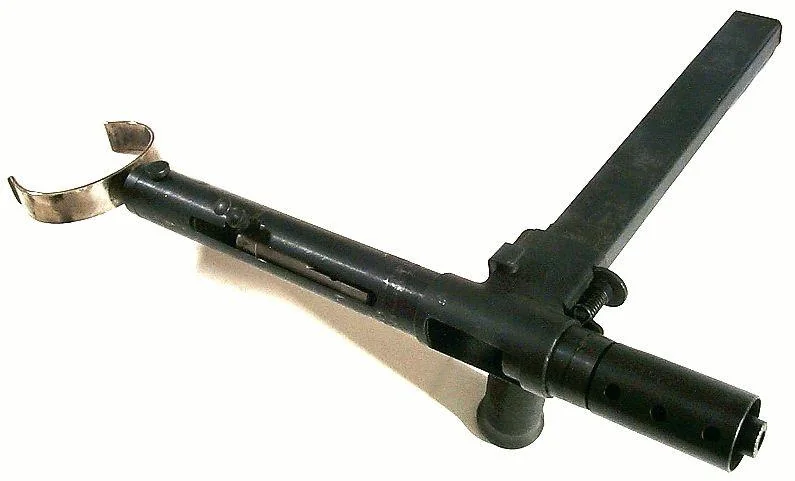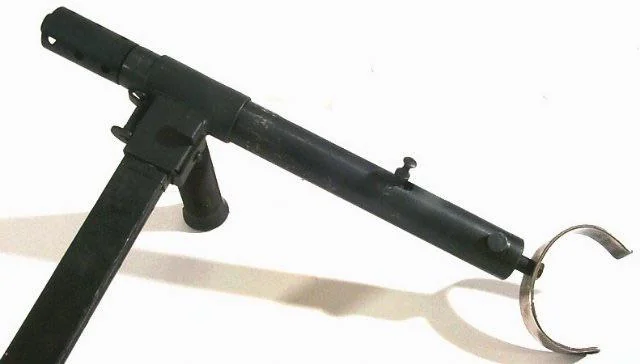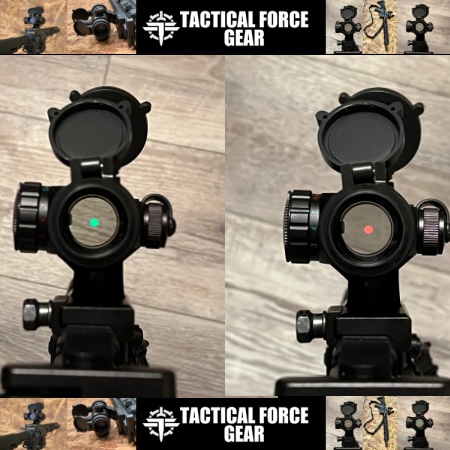The FRT, or forced reset trigger, has been the subject of much discussion and legal opinions that were not and are not legislation. An FRT is designed to simulate full-auto fire, but every round fired requires you to pull the trigger. This simulates full-auto fire and allows you to partially experience the joy and fun of full-auto fire without having to spend tens of thousands of dollars and deal with the ATF. Before the FRT, someone else had a similar idea, and it was called the Sputter Gun.
The Sputter Gun came to be prior to the Hughes Amendment, which prevented the new production of full-auto firearms. The idea for the Sputter Gun originated in 1977, a time when $200 was a lot of money, and tax stamps took months, required going to the post office, and were fairly misunderstood. A man named William York from Utah knew a universal truth about gun owners:
We want full-auto firearms, and we don’t want the Federal government to tell us we can’t.
The Origin of the Sputter Gun
William York was a Type 2 FFL holder, which meant he was a dealer, manufacturer, and importer of NFA firearms. Importing NFA weapons gave Mr. York access to a ton of different weapons. World War II wasn’t last week in 1977, but it wasn’t that far off either. There were still piles of Sten guns sitting in warehouses across the world.
This is where Mr. York came into contact with Samuel Cummings. Samuel Cummings might be one of the most interesting men involved in the arms industry. He created Interarms, which was a massive importer of firearms. It was like Century Arms before Century Arms. He imported tons of milsurp guns and transported even more around the world.

Cummings also worked for the CIA. He worked for the CIA during Korea, but according to recently released files on the JFK assassination, he remained a CIA asset. This is off-topic, but I always have to throw the Samuel Cummings facts in. Samuel Cummings owned one of those warehouses of British Mk 2 STEN guns.
He purchased and imported the entire stock of STEN Guns.
Building the Sputter Gun
Have you ever looked at a STEN gun? It’s one of the simplest weapons ever produced. It was designed to be cheap and easy to produce. They were simple, direct blowback-operated, open-bolt submachine guns. It’s tough to get a simpler weapon. Yet, Mr. York found a way to do so.
He shortened the barrel, removed the stock and trigger device, and installed a tiny grip under the ejection port and magazine well. Removing the trigger simplified an already simple design.
Mr. York’s idea seemed to be making the Sputter Gun NFA-free. This meant removing the stock as well. In its place, he installed a half-circle brace device. This might be the first example of a pistol brace as it’s designed to be braced against the bicep, similar to the stock on the High Standard HS10.

How did the Sputter Gun work exactly? Sten guns have a bolt lock notch, and with the Sputter Gun, that becomes important. The user needs to lock the bolt into the bolt lock and insert the magazine. To fire the gun, the user would push the bolt out of the bolt lock, and as an open-bolt gun, it would slam forward.
As the gun slammed forward, it would fire. It would fire full-auto, and it wouldn’t stop firing until the magazine was depleted. Essentially, the Sputter Gun was a runaway gun, and purposefully slow.
How Was This Legal?
We don’t rightly know where the ATF would fall on this ruling. Mr. York asked the ATF prior to developing the Sputter Gun, but they referred to federal law. Federal law refers to a trigger being used. Mr. York’s logic was that if the gun didn’t have a trigger, it wasn’t a machine gun. I like this man, and I like his logic.
The U.S. Congress defined a machine gun in the 1934 National Firearms Act:
“…any weapon which shoots, is designed to shoot, or can be readily restored to shoot, automatically more than one shot, without manual reloading, by a single function of the trigger.”
The ATF never made an official ruling on the Sputter Gun, and the most we got was a Firearm Technician declaring it could be a machine gun if you considered your finger a machine gun. You can read more about that at the Oath and Bonds substack here.
The Sputter Gun never moved beyond the prototype stage and was never sold. I can’t help but wonder if Mr. York just wanted to rabble-rouse. Part of me still wishes he sold a few to see what the fallout could have been, but that’s easy to say from behind a computer in 2025.
The Sputter Gun and the FRT are trying to do the same thing. I wonder if anyone else has tried to get around the “must have a trigger” rule, even if it’s completely ridiculous and absurd.
Read the full article here













